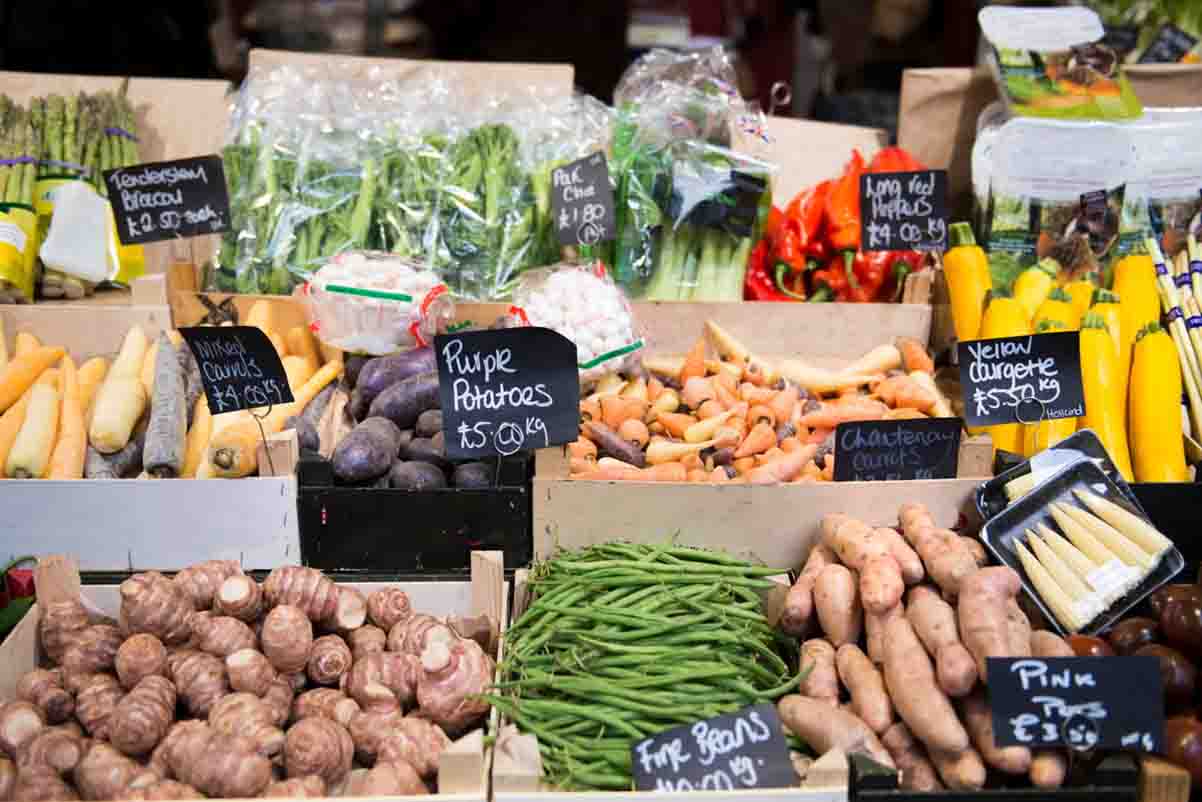When I first arrived in the UK, like many international students or long-distance travelers, I was full of excitement but quickly found myself overwhelmed—without a proper plug adapter, unable to find affordable supermarkets, and completely confused by utility bills. Now, after two years of living here, I’ve compiled a wealth of practical “life hacks.” Here’s a comprehensive guide for every newcomer to help you avoid rookie mistakes and ease into British life with confidence.
1. UK Plug Types, Voltage & Power Usage Tips
1.1 UK Plug: Type G Three-Prong
The UK uses the Type G plug, which has three rectangular prongs arranged in a triangle. It’s entirely different from the flat (Type A) or slanted (Type I) plugs commonly used in China, so you must bring a travel adapter.
If you’re carrying devices like laptops, power banks, or cameras, it’s best to get a multi-functional adapter with USB ports before your trip. Adapters sold in the UK are usually expensive, often starting at £10.
1.2 Voltage: 230V, Compatible but Mind the Frequency
The UK operates on 230V/50Hz. Most Chinese electronics (like laptops and phone chargers) support 100–240V and can be used directly, but you must check the voltage range on your device. Appliances like hairdryers or rice cookers may not be compatible—consider buying a UK-standard version or using a voltage converter.
Pro Tip: Avoid buying adapters or voltage converters at the airport—they’re significantly overpriced!
2. Is the UK Expensive? A Realistic Breakdown of Living Costs
2.1 Food: Cooking Is the Smartest Choice
A meal at a mid-range London restaurant can easily cost £20–£30 (¥180–¥270). In contrast, cooking at home drastically cuts costs. I usually spend around £20 a week on groceries for a full week’s meals.
Here’s an example from Oxford:
- Milk (1L): ~£1.20
- Eggs (6): ~£1.40
- Chicken breast: ~£6/kg
- Bread: ~£0.70–£1
- Vegetables (carrots, broccoli, potatoes): £1–£2 per bag
Home-cooked meals are not only cheaper but also healthier. Most supermarkets have a “Reduced to Clear” section with items marked down by 50%–70%.
2.2 Housing: Varies Drastically by City
Accommodation is the biggest expense. Here’s what I found:
- Central London: £750–£1,200/month for a single room
- Oxford/Cambridge: £500–£900/month
- Manchester/Liverpool: £350–£600/month
- Homestay: £600–£800/month (includes breakfast/dinner)
For short stays, consider Airbnb, YHA hostels, or B&Bs. Booking early can save a lot.
2.3 Transportation: How to Save on Getting Around
UK transport is pricey but there are ways to save:
- Tube/Bus: Use an Oyster card or Contactless debit/credit card—cheaper than buying single tickets
- Trains: Book in advance and get a Railcard (16–25-year-olds save 30%)
- Taxis: Expensive! Walk if you can, or use apps like Uber or Bolt
- Cycling: Cities like London have bike-sharing services (e.g., Santander Bikes)

3. UK Supermarket Guide: Cheapest Options & Tourist-Friendly Picks
UK supermarkets range from budget to luxury. Here’s a comparison:
| Supermarket | Price Level | Features |
|---|---|---|
| Lidl | Cheapest | German chain, excellent value |
| Aldi | Budget | Consistent quality, simple layout |
| Tesco | Moderate | Widespread, wide selection |
| Sainsbury’s | Mid-High | Focus on health and organic |
| Waitrose | Expensive | Premium, organic and imports |
| M&S Food | Very Expensive | Gourmet ready meals and snacks |
3.1 Recommended Buys (For Tourists & Students)
- Meal Deals: Around £3–£4 for sandwich + drink + snack
- English Breakfast Kits: Bacon, sausage, beans, eggs
- British Desserts: Scones, Victoria sponge, jam tarts
- Cereal with Milk & Jam: Easy and filling breakfast
3.2 Receipt Secrets: Don’t Miss Discount Codes
Many receipts have promo codes or vouchers on the back. Look for offers like “£3 off when you spend £20.” Some also have QR codes for prize draws. Don’t throw them away without checking.
4. Travel Insurance in the UK: Burden or Essential?
Many overlook travel insurance. A friend once broke his leg in Scotland and had to pay nearly £1,000 out-of-pocket. The NHS (National Health Service) doesn’t usually cover tourists.
Get travel medical insurance before departure. Good plans cover accidents, delays, cancellations, and lost property. Annual plans cost about ¥300–¥600.
5. Travel Life Hacks: Avoid Pitfalls, Save Money & Stay Safe
5.1 Tipping Culture
Tipping is not mandatory in the UK. At restaurants, 10% is typical for good service. You don’t need to tip at cafes or pubs.
5.2 Vending Machines Often Swallow Coins
Don’t rely on vending machines—they often malfunction. I’ve lost coins multiple times. Use convenience stores or supermarkets instead.
5.3 Free Toilets Are Rare—Look for Big Stores or Starbucks
Many public toilets charge £0.30–£0.50. Big chains like Starbucks, Pret, and M&S usually have restrooms—buy something small to use them.
5.4 Student Cards Save You Money
Carry an ISIC card or youth membership (e.g., YHA card). Discounts apply at museums, restaurants, and on transport.
5.5 Card Is King—Cash Is Outdated
Credit/debit cards are dominant. Apple Pay and Google Pay are widely accepted. Carry a little cash, but expect many shops to be card-only.
6. Supermarket Hacks & Money-Saving Strategies
6.1 Shop During Discount Hours
Most supermarkets start markdowns after 6 PM. Look for soon-to-expire fresh food with discounts of 50%–90%.
6.2 Use Loyalty Cards
Major supermarkets offer rewards:
- Tesco Clubcard: Access exclusive discounts
- Sainsbury’s Nectar Card: Earn points and promotions
- Boots Advantage Card: Great for beauty and health products
6.3 Self-Checkout for Speed and Privacy
If you have a small basket, use the self-checkout machines—no queues, no awkward language issues.
7. Final Tips for Eating, Living & Getting Around in the UK
- Breakfast? Cereal, milk, and fruit = cheap and nutritious
- Check rental contracts for “bills included” clauses
- Heating in winter is usually gas-based—dress warmly
- Always tap in and out on public transport
- Airport “duty-free” is often pricier than city supermarkets

8. Online Shopping & Delivery Services in the UK
8.1 Common E-Commerce Platforms
Besides in-person shopping, delivery services are popular in the UK. My go-to platforms:
- Tesco Online: Minimum £25 order, £7 delivery. Clubcard holders enjoy discounts or free delivery. Same-day options often available.
- Sainsbury’s Click & Collect: Order online, pick up in 2 hours. Great for small towns with partner stores.
- Ocado: Online-only store with tons of premium/imported products. Delivery ranges from £3–£7 depending on time slot.
- Amazon Pantry / Fresh: Non-members can buy groceries; Prime members enjoy extra discounts.
My Experience: My first Ocado delivery arrived in under 3 hours. The driver neatly arranged the bags at the door—perfect for bulk shopping or lazy days.
8.2 Food Delivery Apps
- Deliveroo / Uber Eats / Just Eat: Popular delivery apps offering everything from fast food to local eats. Delivery usually £2–£4; orders over £15–£20 often get free delivery.
- Meal Kits (e.g. HelloFresh, Gousto): £20–£35 per week (for 2 servings). Pre-cut ingredients and recipes are delivered—great for beginners and variety.
Tip: Avoid peak hours (12:00–13:30, 18:00–20:00) to dodge delays.
9. Holidays & Opening Hours: Plan Ahead
9.1 Supermarkets on Public Holidays
On UK Bank Holidays, many stores close or reduce hours:
- New Year’s Day, Easter Monday, early/late May Mondays, last Monday of August (Summer Bank Holiday), Christmas
Lidl and Aldi often close entirely. Tesco and Sainsbury’s open 10:00–16:00. Expect discounts just before holidays—stock up early.
9.2 Regular Opening Hours
- Large supermarkets (e.g., Tesco Extra): Many open 24/7 or 6:00–24:00
- Smaller stores: Typically 7:00–23:00; Sundays 10:00–16:00
- Waitrose: Usually closes by 20:00; Sundays 11:00–17:00
My Story: When I first arrived in Oxford, I didn’t know shops closed early on Sundays. I rushed to buy dinner ingredients before 4 PM!
10. Beyond Supermarkets: Local Shops & Farmers’ Markets
10.1 Farmers’ Markets
Held in most towns on weekends. Fresh produce, artisan bread, cheese, and honey. Slightly pricier but better quality—and supports local farmers.
- Oxford Covered Market (Wed/Sat)
- Cambridge Market Square (Thu/Sun)
- London Borough Market (Mon–Sat, best during lunch)
My Experience: I once bought fresh-picked strawberries at Covered Market—far sweeter than the packaged ones. I also found a handmade chocolate stall that became my go-to for souvenirs.
10.2 Small Convenience Stores
You’ll see brands like Nisa Local, Co-op, or independently run corner shops. Prices are higher but they’re open late or 24/7, making them perfect for emergency milk or bread runs.
11. Sustainability & Eco-Friendly Shopping
11.1 Bring Your Own Bag & Cutlery
Most supermarkets charge £0.10–£0.30 per plastic bag. I carry a foldable cloth bag and reusable cutlery when buying ready meals—less waste, more savings.
11.2 Zero-Waste Stores
Shops like Unpackaged and The Detox Market let you bring your own containers and buy items by weight—grains, nuts, soaps, etc. Found in cities like London, Bath, and Bristol.
12. Mobile Payment & Finance Tips
12.1 Payment Methods
- Contactless Cards: Tap to pay up to £100—no PIN required
- Apple Pay / Google Pay: Fast, secure mobile payment
- Cash: Carry small notes (£5, £10, £20) for markets or coin toilets
12.2 Exchange Rates & ATM Withdrawals
Airport ATMs have high fees. Use city ATMs or credit cards with no foreign transaction fees. You can also pre-exchange currency and apply for international-use debit cards from your home bank.
Living the Local Way in the UK
Thinking back to my first few days in the UK—I didn’t know how to plug in my laptop, was baffled by supermarket layouts, and puzzled by bills. Now, I’ve learned:
- Bring a Type G plug and USB adapter
- Budget wisely for food and housing
- Use apps, loyalty cards, and discount tricks
- Master online shopping and delivery services
- Respect local customs while staying eco-friendly
Travel isn’t just about checking off sights—it’s about embracing new ways of life. I hope every day you spend in the UK is as smooth as it is enriching.



